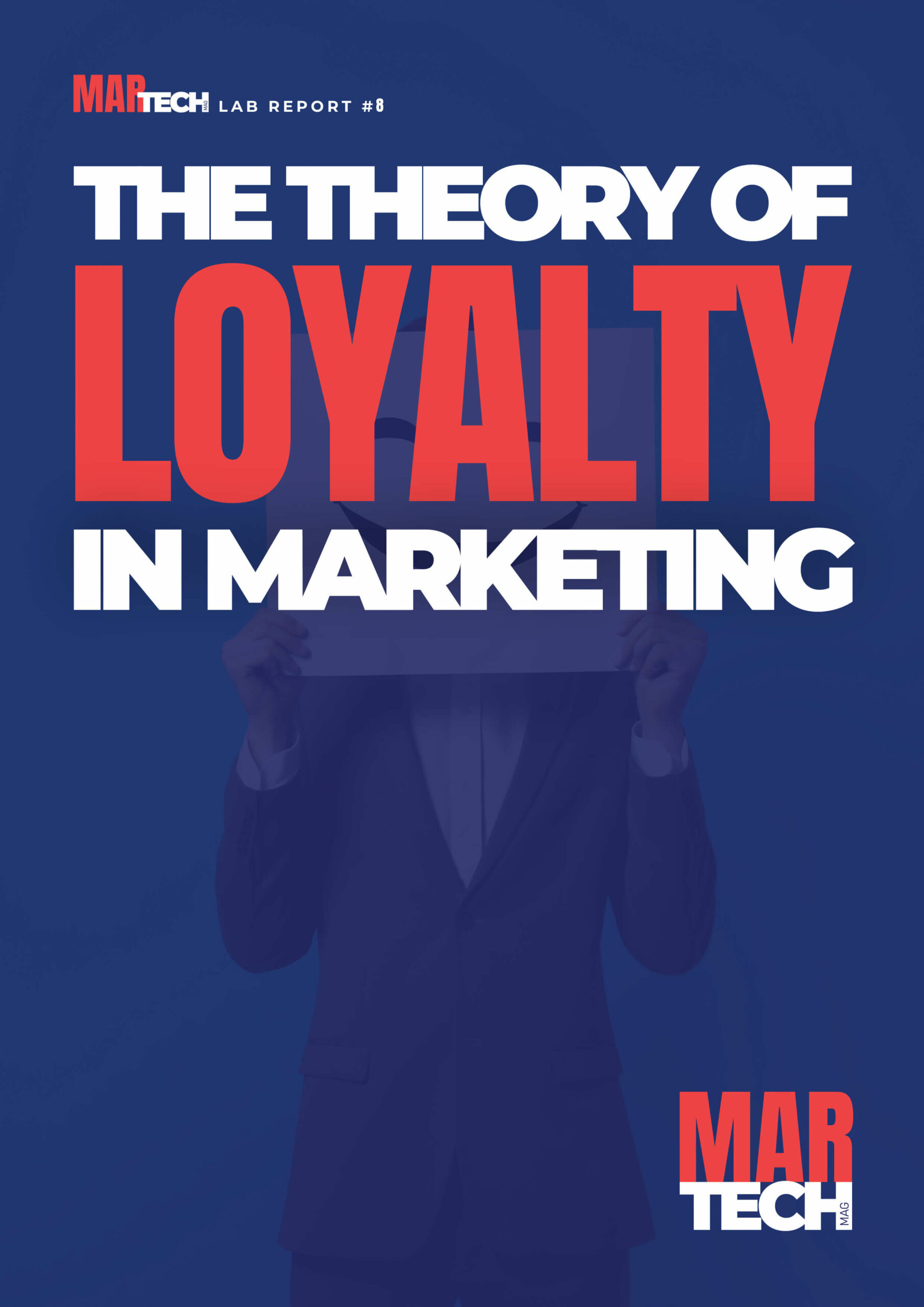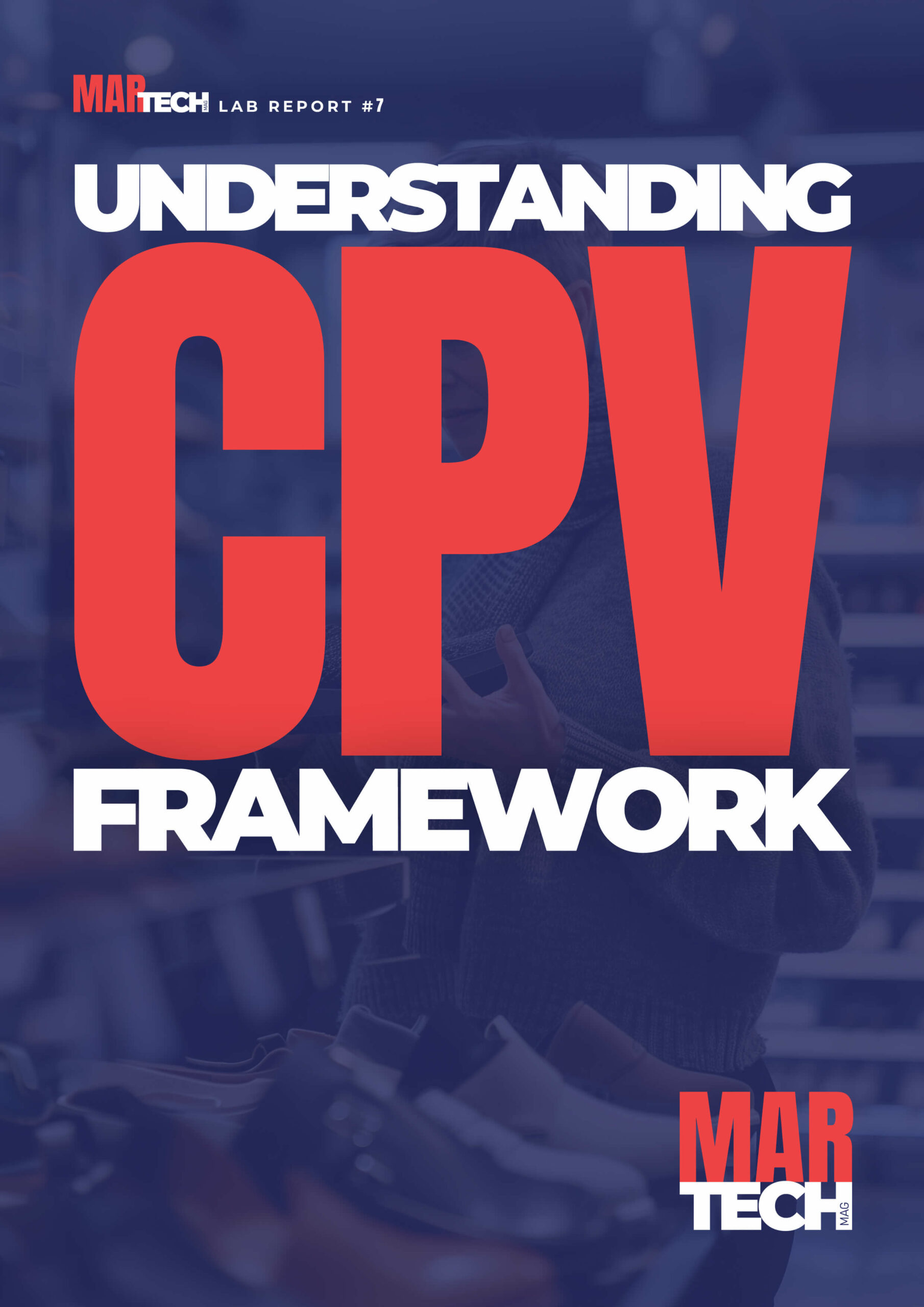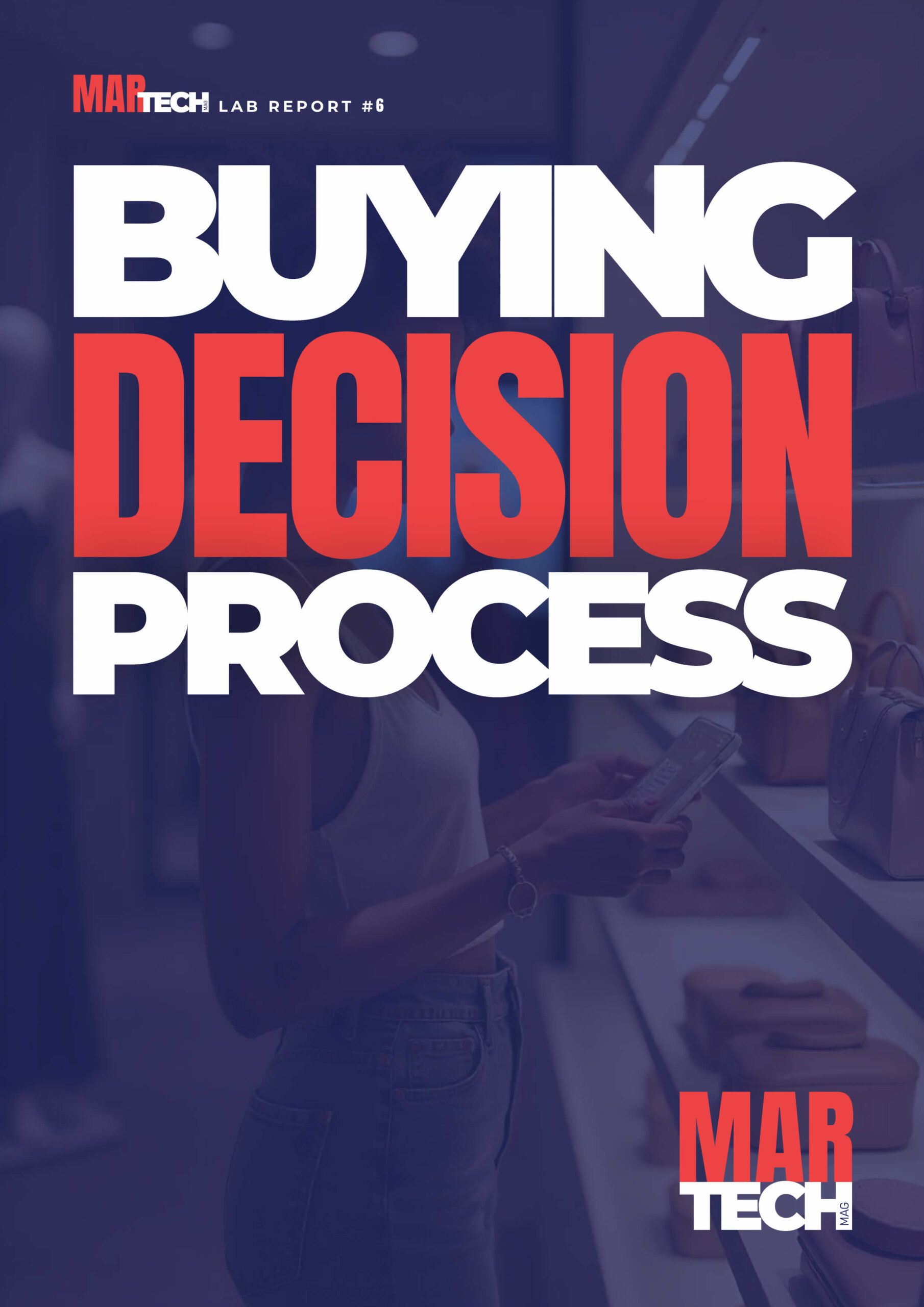





Shaping tomorrow’s marketing standards through theory, AI and digital reengineering.
Independent digital publication on marketing, AI and technology.
The level of interaction and involvement from readers with a blog’s content, including comments, shares, or time spent reading.
Example: A blogger receives numerous comments and social media shares, indicating high engagement with their posts.
The use of unethical or manipulative techniques to improve a website’s search engine ranking, often violating search engine guidelines.
Example: A website using keyword stuffing or link farms to try to rank higher in search results.
Proven and effective methods or techniques used to achieve successful outcomes in marketing strategies and campaigns.
Example: Utilizing storytelling in email marketing is a best practice to engage subscribers.
A form of online advertising that targets users who have previously interacted with a brand but did not make a purchase.
Example: A user who viewed a product on an e-commerce site but didn’t buy it is later shown ads for that product on other websites.
The tendency of users to ignore or overlook banner ads on websites due to their overuse or the way they are presented.
Example: Users scrolling through a website without noticing a banner ad promoting a sale.
The later stages of the sales funnel where leads are converted into customers, often involving post-purchase engagement and upselling.
Example: A company sending follow-up emails and offering complementary products to customers who made a recent purchase.
Ads served based on the content of a webpage, making them relevant to the user’s current activity.
Example: A food blog displays ads for cookware and recipe books.
Enhancing content to improve its visibility, engagement, or conversions, often for search engines or audience relevance.
Example: A blog post is updated with targeted keywords to rank higher on Google.
A partnership between two or more companies to create a shared marketing initiative.
Example: A travel agency and a hotel chain collaborate on a vacation package campaign.
Content created by customers, such as reviews, testimonials, or social media posts, that promotes a brand.
Example: A customer posts an Instagram photo of themselves wearing a brand’s T-shirt.
The measurement of how well content achieves its intended goals, such as traffic or conversions.
Example: An article generating 1,000 clicks and 50 sales is considered high-performing.
Extending the reach of content by promoting it across multiple channels, including paid ads and social sharing.
Example: A blog post is shared on LinkedIn and boosted with a small ad budget.
Building and maintaining relationships with a brand’s community through interaction and communication.
Example: A company hosts Q&A sessions on its social media pages.
Strategies focused on specific marketing channels like email, social media, or in-store promotions.
Example: A brand focuses on Instagram ads to reach younger audiences.
A method of analyzing specific groups (cohorts) of customers over time to identify trends or behaviors.
Example: An e-commerce site examines purchasing patterns of users who joined in January.
A marketing strategy where two or more brands collaborate to create a product or campaign.
Example: Nike and Apple co-brand a fitness tracking device.
The act of clicking a link or ad to visit another page or website.
Example: A user clicks on a banner ad to land on the product page.
The process of collecting, analyzing, and interpreting data from marketing campaigns to evaluate performance.
Example: A company uses Google Analytics to track the effectiveness of its email campaign.
Software used to create, manage, and modify digital content without needing technical skills.
Example: WordPress is a popular CMS for building websites.
Encouraging customers to purchase related or complementary products.
Example: Suggesting headphones when a customer buys a smartphone.
Coordinating marketing efforts across multiple channels to deliver a consistent message.
Example: A campaign includes ads on social media, email, and TV with the same branding.
The total revenue a business can expect from a customer over the entirety of their relationship.
Example: A company calculates that a loyal customer generates $1,000 in lifetime value.
A document outlining the key objectives, audience, and creative direction for a marketing campaign.
Example: An agency uses a creative brief to guide the design of an ad campaign.
The gathering and analysis of competitor data to inform business decisions.
Example: A company tracks a competitor’s product launches to stay ahead in the market.
The cost of reaching 1,000 people with an ad.
Example: A brand pays $20 CPM for its video ad campaign.
The cost incurred to generate a lead through marketing campaigns.
Example: A company runs a lead-generation campaign and calculates $15 per lead.
The amount an advertiser pays for each click on their ad.
Example: A company pays $1 per click for a search ad campaign.
The cost incurred to acquire a customer or lead through marketing efforts.
Example: A brand spends $500 on ads and gains 10 customers, making its CPA $50.
A prompt encouraging users to take a specific action, such as “Buy Now” or “Sign Up.”
Example: An online ad with the CTA “Learn More” directs users to a product page.
Obtaining ideas, content, or services from a large group of people, often through online platforms.
Example: A brand runs a contest for customers to design its next product label.
The process of sharing content through various channels, such as social media, email, or websites.
Example: A brand publishes an article on its blog and promotes it on Facebook and LinkedIn.
The process of producing original content, such as blog posts, videos, or infographics, to engage an audience.
Example: A brand creates a tutorial video demonstrating how to use its product.
The series of steps a potential customer takes to complete a conversion, such as making a purchase.
Example: A funnel might include awareness through an ad, engagement on a landing page, and finally a purchase.
The percentage of users who complete a desired action, such as making a purchase or signing up for a newsletter.
Example: A website with 1,000 visitors and 50 sales has a conversion rate of 5%.
A schedule outlining the publication dates and times for planned content across various platforms.
Example: A social media team uses a calendar to organize posts for the upcoming month.
A plan for creating, delivering, and managing content that aligns with business goals and meets audience needs.
Example: A brand develops a strategy to publish weekly blog posts, social media updates, and video tutorials.
The percentage of customers who stop using a product or service within a given time frame.
Example: A subscription service calculates its churn rate by tracking how many users cancel each month.
The process of planning, executing, tracking, and analyzing marketing campaigns to achieve the desired results.
Example: A marketing team uses software to monitor the performance of a new product launch campaign.
A planned series of marketing actions or efforts aimed at achieving specific objectives, such as promoting a product or raising awareness.
Example: A company launches a holiday sales campaign with ads on social media and email offers.
The process of finding and sharing relevant content from external sources to engage an audience.
Example: A brand shares an industry article on its social media page.
The percentage of users who click on a link or ad out of the total number of viewers.
Example: An ad that receives 100 clicks out of 1,000 views has a CTR of 10%.
Valuable information derived from analyzing consumer behavior to guide marketing strategies.
Example: A survey reveals that customers prefer eco-friendly packaging, influencing the brand’s product strategy.
The use of unethical or manipulative techniques to improve a website’s search engine ranking, often violating search engine guidelines.
Example: A website using keyword stuffing or link farms to try to rank higher in search results.
The use of tools and strategies to manage interactions and data related to current and potential customers.
Example: A company uses a CRM system to track customer interactions and sales opportunities.
The overall perception and satisfaction a customer has when interacting with a brand.
Example: A seamless checkout process contributes to a positive customer experience.
The complete experience a customer has with a brand, from initial awareness to post-purchase interactions.
Example: A customer sees an ad, visits the website, makes a purchase, and receives follow-up emails.
The process of gaining new customers through marketing efforts like ads, promotions, and outreach.
Example: A company runs a Google Ads campaign to attract first-time buyers.
Strategies and actions aimed at keeping existing customers engaged and loyal to a brand.
Example: Offering loyalty programs or personalized discounts to returning customers.
The process of improving a website or marketing strategy to increase the percentage of visitors who take a desired action.
Example: A company tests different landing page designs to find the one that converts best.
The process of identifying and attracting potential business clients or leads for a business-to-business (B2B) company.
Example: A software company hosting webinars to generate leads from other businesses looking for new tools.
A statement that outlines the unique value a business offers to its customers, differentiating it from competitors.
Example: A tech company’s business proposition could be “Offering the most user-friendly software for small businesses.”
The process of allocating a specific amount of financial resources to various marketing initiatives to ensure effective campaign execution.
Example: A company planning a marketing campaign and allocating 30% of the budget to social media ads and 20% to influencer partnerships.
The combination of traditional and digital marketing methods to create a comprehensive, multi-channel strategy.
Example: A company running print ads alongside a digital campaign to maximize reach.
Ensuring that marketing strategies and activities are directly aligned with the overall goals and objectives of the business.
Example: A marketing team adjusting their social media strategy to support the company’s goal of expanding into new markets.
The likelihood or readiness of a potential customer to make a purchase, often determined by their actions and behavior.
Example: A user adding products to their shopping cart but not completing the purchase indicates high buyer’s intent.
An email sent to a large number of recipients at once, typically used for marketing campaigns or announcements.
Example: A company sending a newsletter to all its subscribers about an upcoming sale.
A comprehensive assessment of a brand’s current market position, strengths, weaknesses, and opportunities for improvement.
Example: A company reviewing its brand identity and customer perception to inform future marketing strategies.
A person who represents and promotes a brand, often through personal endorsement and advocacy.
Example: A famous athlete promoting a sportswear brand in their social media posts.
The percentage of visitors or leads that convert into paying customers or clients.
Example: A company’s website has a conversion rate of 3%, meaning 3% of visitors make a purchase.
A visual framework used by businesses to describe, design, and innovate their business model in a concise and structured way.
Example: A startup using the Business Model Canvas to map out its key activities, value propositions, and customer segments.
Content that is created by a brand or company to promote its message or product while providing value to the audience.
Example: A recipe video sponsored by a food company that subtly promotes its product.
The process of comparing a company’s performance against industry standards or competitors to identify areas for improvement.
Example: A retailer comparing its customer satisfaction scores to those of its top competitors.
The process of evaluating the benefits of a product, service, or campaign against its costs or potential risks.
Example: A company analyzing the benefits of implementing a new CRM system to improve customer retention.
Marketing strategies focused on the post-purchase experience, such as customer support, loyalty programs, and retention tactics.
Example: A brand sending personalized follow-up emails to customers with related product recommendations.
A plan for creating and distributing blog content that aligns with business goals and engages the target audience.
Example: A company planning blog posts around product launches and seasonal trends.
A term referring to the act of banning or blocking disruptive users or spam accounts from a platform or community.
Example: An online forum moderator banning users who repeatedly post spam content.
The final stage in the buyer’s journey where the prospect is ready to make a purchase decision.
Example: A customer receiving a discount code to encourage them to complete a purchase.
The process of analyzing user behavior data to understand how people interact with a website or app.
Example: Analyzing the pages users visit most on a website to improve content and navigation.
The practice of sending large volumes of emails to a group of recipients at once, often used for promotional campaigns.
Example: A company sending a promotional email about a sale to thousands of subscribers.
The process of distributing a set marketing budget across various strategies, channels, or campaigns.
Example: Allocating 40% of the marketing budget to digital ads, 30% to influencer marketing, and 30% to events.
A document outlining the objectives, strategy, and requirements for a marketing or creative project.
Example: A creative brief for an advertising campaign that specifies the target audience, message, and deliverables.
A marketing or incentive program where rewards or bonuses are offered for achieving specific goals, like referring new customers or finding bugs in software.
Example: A software company offering rewards to users who find and report bugs.
The use of data analysis tools and techniques to make informed business decisions based on collected data.
Example: Using BI tools to analyze sales data and forecast future trends in a retail business.
The activities and strategies employed to grow a business, such as forming partnerships, entering new markets, or increasing revenue.
Example: A startup forming partnerships with other companies to expand its customer base.
The percentage of visitors who leave a website after viewing only one page, indicating a lack of engagement.
Example: A blog with a high bounce rate suggests that visitors are not exploring other posts on the site.
The process that potential customers go through before making a purchase, typically divided into stages: awareness, consideration, and decision.
Example: A customer first learns about a product, then compares options, and finally decides to purchase it.
A semi-fictional representation of an ideal customer based on data and research.
Example: Creating a persona for a tech-savvy millennial who values innovation when buying products.
Mass communication channels such as television and radio used for advertising.
Example: A car company airing a commercial during the Super Bowl to reach millions of viewers.
The process of creating a unique identity for a product or company in the marketplace.
Example: Coca-Cola’s red color, logo, and brand messaging forming its distinctive identity.
The tone and style used in a brand’s communication to reflect its personality and values.
Example: A brand using a friendly, casual tone in its social media posts to connect with young audiences.
The ability of consumers to identify a brand by its logo, packaging, or other unique elements.
Example: McDonald’s golden arches instantly recognized by consumers worldwide.
The strategic process of positioning a brand in the market to appeal to the target audience.
Example: Volvo positioning itself as the safest car brand on the market.
The process of developing and maintaining a brand’s image, reputation, and equity.
Example: A brand manager ensuring consistent messaging across all channels and customer touchpoints.
A customer’s commitment to repurchase or continue using a brand over time.
Example: A customer consistently buying Nike products because they trust the brand’s quality.
The value a brand adds to a product based on consumer perception, recognition, and loyalty.
Example: Apple’s strong brand equity allows it to charge premium prices for its products.
Maintaining uniformity in branding elements (logo, colors, messaging) across all marketing channels.
Example: A company using the same logo and color scheme on its website, social media, and packaging.
The extent to which consumers can recognize or recall a brand.
Example: A survey shows that 80% of consumers recognize the Coca-Cola logo.
Using blogs to promote products, services, or brands through content marketing strategies.
Example: A company writes blog posts to educate customers about its products and attract leads.
Large outdoor advertising structures commonly found in high-traffic areas.
Example: A billboard in Times Square advertising a new movie release.
Large volumes of structured and unstructured data used to uncover insights for decision-making.
Example: Analyzing consumer purchasing data from millions of transactions to identify trends.
Comparing a company’s performance metrics to industry standards or best practices.
Example: A company comparing its customer satisfaction scores with those of its competitors.
A marketing technique that uses web browsing behaviors to target users with specific ads.
Example: Showing ads for running shoes to a user who recently searched for fitness gear.
A graphic advertisement displayed on websites, typically in the form of a rectangular image or graphic.
Example: A banner ad at the top of a website promoting a sale on electronics.
A link from one website to another, often used in SEO to improve search engine rankings.
Example: A blog linking to a product page on another website, which improves the site’s SEO.
A business model where companies sell directly to individual consumers.
Example: A clothing retailer selling clothes directly to customers through an online store.
Business transactions between companies rather than between a company and consumers.
Example: A software company selling its product to another business instead of individual consumers.
The plan or approach used to attract and convert new customers to a brand or business.
Example: Offering a free trial to encourage sign-ups for a subscription service.
The average amount a customer spends per transaction in a given period.
Example: An e-commerce site with $10,000 in sales from 200 orders has an AOV of $50.
Using augmented reality in marketing campaigns to create immersive and interactive ads.
Example: A makeup brand allowing users to try on products virtually through an AR app.
An interactive technology that overlays virtual elements onto the real world to enhance user experience.
Example: A furniture brand offering AR tools to visualize products in customers’ homes.
A flexible marketing approach that uses iterative processes and rapid adjustments to respond to changing conditions.
Example: Updating a campaign mid-launch based on real-time analytics.
An individual or company that creates and promotes ads to market products or services.
Example: A digital marketer running Facebook ads for a local restaurant.
The time frame during which a conversion can be attributed to a specific marketing touchpoint.
Example: A 30-day attribution window for tracking the effectiveness of an email campaign.
Tools designed to track and assign credit to various marketing channels and touchpoints.
Example: Using HubSpot’s attribution reports to see how a blog post contributed to lead generation.
Analyzing and assigning credit to different marketing touchpoints that lead to conversions.
Example: Using a multi-touch attribution model to evaluate the impact of social media and email campaigns on a sale.
Sending pre-scheduled or triggered emails based on user behavior or predefined criteria.
Example: Sending a welcome email automatically when a user signs up for a newsletter.
Verifying the identity of users or systems before granting access to data or services.
Example: Requiring a username and password for access to a marketing analytics platform.
Automated targeting features in advertising platforms that identify and reach optimal audiences.
Example: Google Ads’ “Smart Campaigns” using machine learning to target potential customers.
Focusing marketing campaigns on specific audience groups to improve relevance and effectiveness.
Example: Running a campaign targeting young professionals interested in technology.
Dividing a target audience into smaller, more specific groups based on shared characteristics.
Example: Segmenting an email list by purchase history to send tailored product recommendations.
A fictional representation of an ideal customer based on research and data.
Example: Creating a persona named “Eco Emily,” a 30-year-old eco-conscious buyer of sustainable products.
Data-driven information about a specific audience’s behavior, preferences, or demographics.
Example: Learning through analytics that your audience prefers video content over blog posts.
Strategies designed to grow and engage a brand’s target audience over time.
Example: Creating content to attract followers on social media and converting them into loyal customers.
Customizing marketing efforts to reach users of specific apps or app categories.
Example: Running ads for a fitness app targeting users of health-tracking apps.
Optimizing an app’s title, description, and visuals to improve its ranking in app store search results.
Example: Adding relevant keywords and compelling screenshots to an app listing to attract downloads.
Strategies aimed at promoting mobile apps to increase downloads, engagement, and user retention.
Example: Running a Facebook ad campaign to promote a new fitness app.
Restricting the number of API requests a user or system can make in a specific time frame to prevent misuse.
Example: Limiting a weather app to 1,000 requests per hour to ensure fair usage.
The process of connecting different software systems via APIs for seamless data exchange.
Example: Integrating a payment gateway like PayPal into an e-commerce platform.
A set of protocols that allow different software applications to communicate and share data.
Example: Using the Facebook API to integrate social media login on a website.
A visual representation of marketing data, providing key metrics at a glance.
Example: Google Analytics dashboard displaying traffic sources and conversion rates.
Non-traditional data sources, such as social media activity or satellite imagery, used for insights.
Example: Analyzing foot traffic near stores via geolocation data to estimate sales potential.
Automated conversational tools using AI to assist users, answer queries, or guide them through processes.
Example: A chatbot on a retail website helping customers find products or track orders.
Using AI to tailor marketing messages, content, or offers based on individual user behavior and preferences.
Example: Netflix recommending shows based on your viewing history.
A business program that allows affiliates to earn rewards for driving traffic or sales.
Example: Amazon Associates Program where affiliates earn a commission for products sold via their links.
Platforms that connect affiliates with businesses offering affiliate programs.
Example: Using ShareASale to find affiliate opportunities with e-commerce brands.
A performance-based marketing strategy where affiliates earn commissions by promoting products or services.
Example: A blogger earning a commission for promoting a fitness tracker through an affiliate link.
Content designed to automatically adjust to different formats, devices, or user preferences for a seamless experience.
Example: A blog post that displays differently on a smartphone, tablet, and desktop while maintaining readability.
Data-derived conclusions that can directly inform and guide marketing strategies or decisions.
Example: Discovering through analytics that most purchases occur on weekends and scheduling ads accordingly.
Monitoring specific user actions, such as clicks, downloads, or form submissions, to assess engagement and effectiveness.
Example: Tracking how many users click the “Add to Cart” button on an e-commerce site.
A method to compare two versions of a webpage, email, or other content to see which performs better based on user engagement.
Example: Testing two email subject lines to determine which gets higher open rates.
Click-Through Rate (CTR) is the percentage of users who click on an ad compared to the total number of users who see it.
For instance, if an ad gets 100 views and 5 clicks, the CTR is 5%.
Ad viewability measures whether an ad was visible on a user’s screen and met the required standards for impressions.
For example, an ad is considered viewable if at least 50% of its content was visible on a screen for at least one second.
Ad spend refers to the total amount of money spent on advertising during a campaign.
For example, a company might allocate $10,000 to an ad campaign promoting a new product launch.
Ad scheduling is the process of planning specific times and days for an advertisement to run to maximize effectiveness.
For example, a restaurant might schedule ads to appear during lunch and dinner hours.
Ad retargeting is a technique that re-engages users who previously interacted with a website or ad by showing them related ads on other platforms.
For example, after browsing a pair of shoes on an e-commerce site, you might see ads for the same shoes on Facebook.
Ad impressions represent the total number of times an advertisement is displayed to a user.
For example, if an ad is shown 1,000 times on a website, it records 1,000 impressions.
Ad creative includes all the visual elements of an advertisement, such as images, videos, and graphics.
For instance, a commercial showing sleek visuals of a car model is an example of ad creative.
Ad copy refers to the written content of an advertisement, crafted to attract attention and inspire action.
For example, a banner ad for a sale might feature the text, “50% off all items this weekend!”
An ad campaign is a planned series of advertisements across multiple platforms, designed to achieve specific marketing goals.
For example, a fashion brand might run ads on Instagram, Facebook, and email to promote a new collection.
An ad blocker is a tool, often a browser extension or built-in feature, that prevents advertisements from being displayed on websites and applications.
For example, a user who installs AdBlock on their browser won’t see pop-ups or banner ads on most websites.
An advertising budget refers to the total amount of money allocated for marketing campaigns within a specific period.
For example, a company might allocate $500 per month for advertising on social media platforms.
Customer Acquisition Cost (CAC) measures the total cost incurred to acquire a new customer, calculated by dividing the total marketing and sales expenses by the number of new customers.
For instance, if a business spends $1,000 on ads and gains 10 customers, the CAC is $100 per customer.
ABM is a B2B marketing strategy that targets and engages high-value accounts with personalized campaigns. It involves focusing on specific clients instead of a broad audience.
For example, a software company might create tailored emails and customized demos for executives at a target company.


